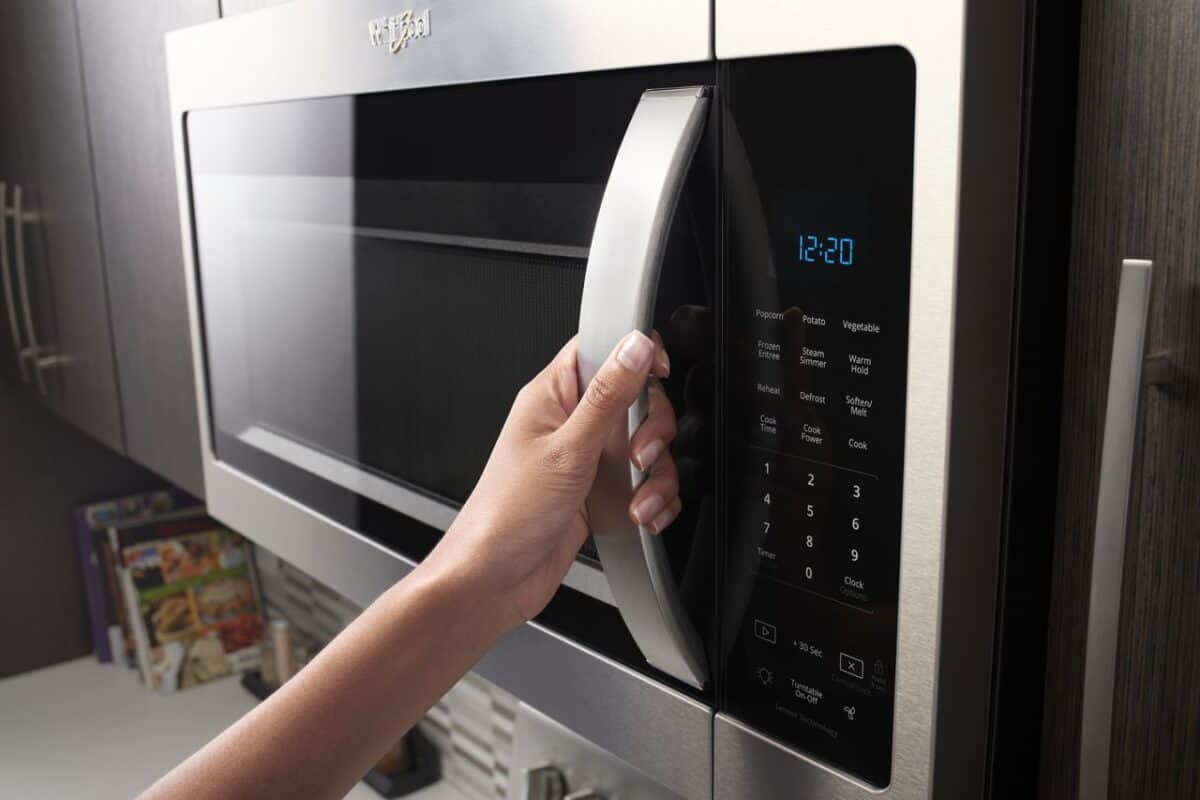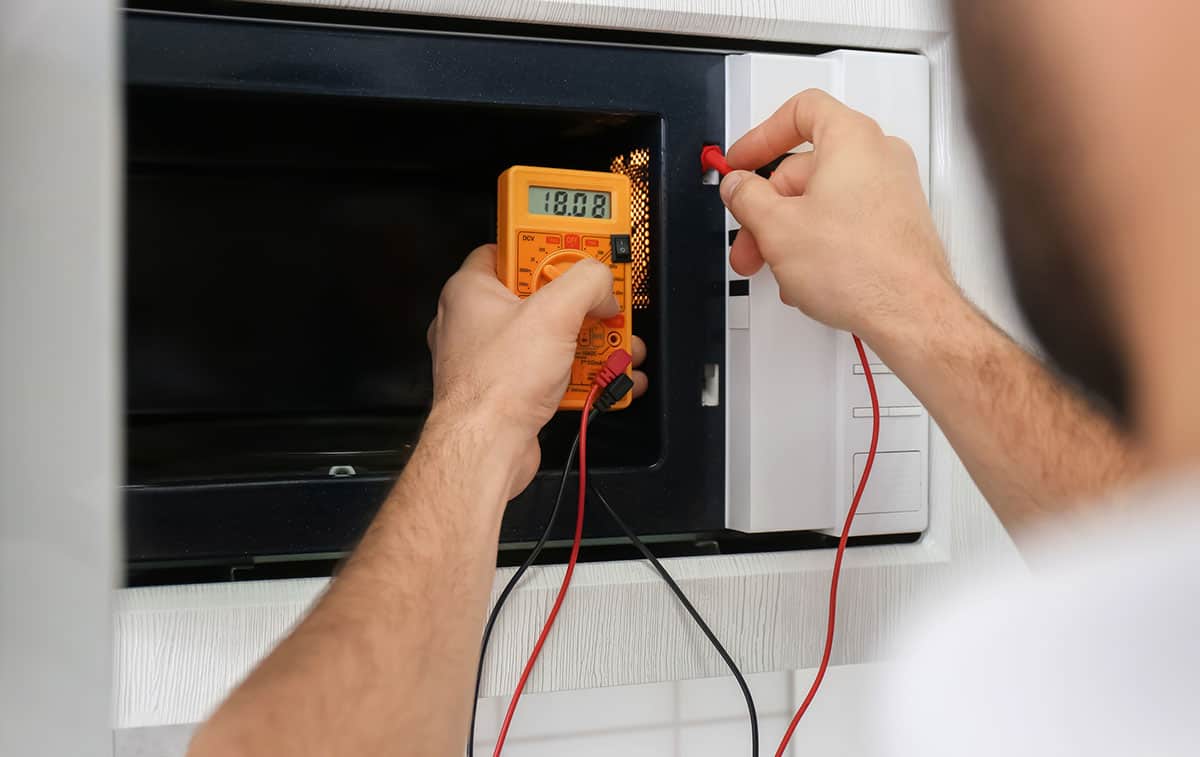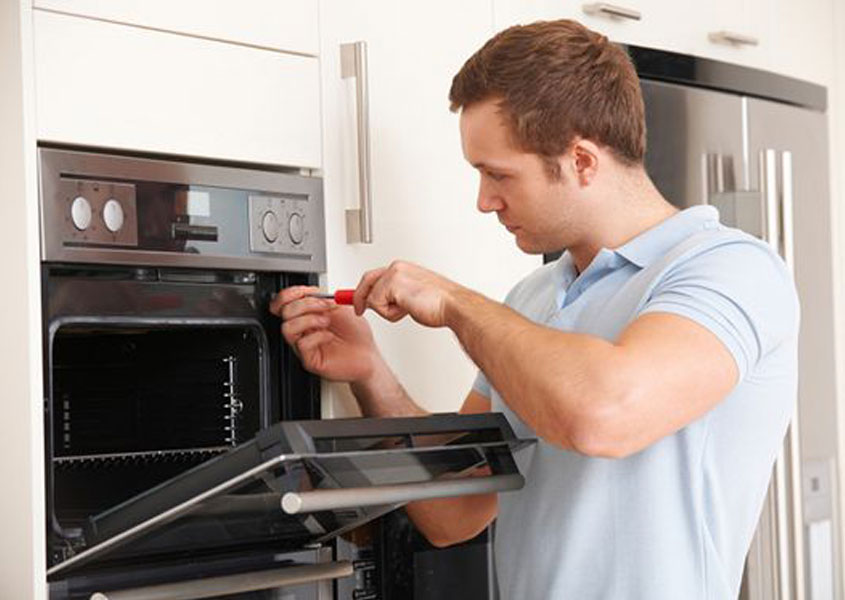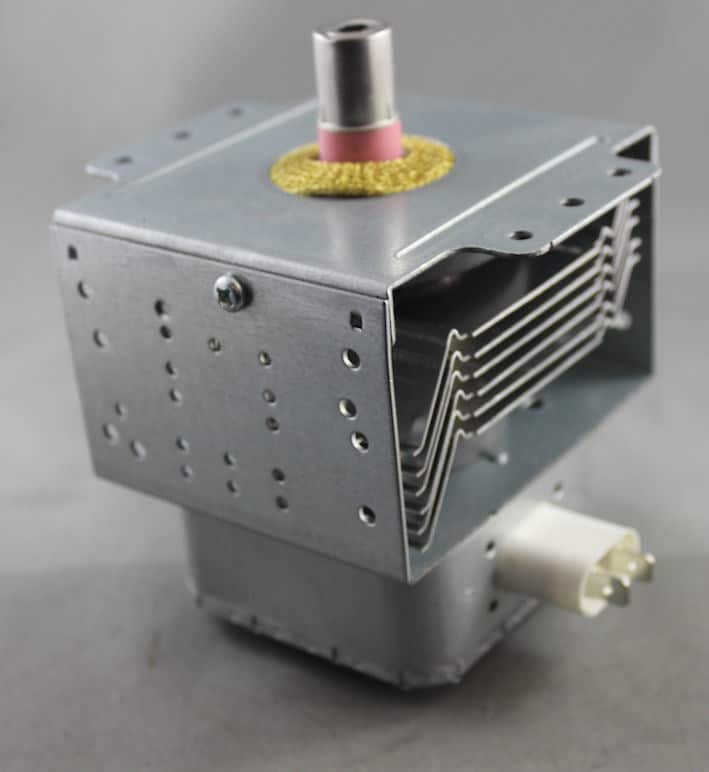We know it is not a pleasant feeling and would be full of confusion when you suddenly find out that your microwave won’t heat anymore. Microwave is just your best, most- necessary friend. You use it every day to heat up your food, defrost frozen food, and help you to make food just in 5 minutes.
I believe many of you coming in here with a real panic. But trust me, you are going on the right site. It is the right decision to try to figure out what happened first before calling for a technician. If you are lucky enough, you only need a few tricks to fix it. In contrast, you have to find a technician or buy a brand new one.
But first, let me tell you every single component of the microwave and how it works. It is vital to know which part you are working on to make sure you don’t make it worse.
Table of Contents
What Does A Microwave Consist Of?
Here is a simple diagram of a microwave. According to Wikipedia, a basic microwave are made out of:
- a high-voltage power generator that feeds radiation to the magnetron, either a simple transducer or a power systems converter
- a high-voltage capacitor linked to the magnetron, transformer, and base through the use of a diode
- A cavity magnetron is a device that transforms high-voltage electrical energy into microwave radiation.
- a control circuit for magnetrons (usually with a microcontroller).
- a waveguide that is relatively short (to couple microwave power from the magnetron into the cooking chamber)
- a metal waveguide stirring fan and/or a turntable.
- a control panel.
Microwaves produce radiation that may burn anybody who is pumped full for long periods of time. Efficient inventory control is required during the manufacturing process. The quantity of radiation that can escape from an oven is limited up to more than 4 milliwatts per square centimeter at about 8 cm from the oven surface, according to federal rules that apply to all ovens produced after the 70s.
All ovens must also have two separate, interlocking switches to halt the production of microwaves when the latch is removed or the door is opened, according to the rules.
Therefore, for your own safety, you should check out your microwave carefully and make sure every component has been placed where it should be. This is essential especially when your home has a baby.
How Does A Microwave Work?
In a nutshell, a microwave heats food by radiation, just like how the sun does to our body. Microwaves are so fast and convenient because they transfer heat energy to the molecules (small particles) within the food.
Microwaves, even though it looks small and portable, pack a lot of energy. Microwaves have the disadvantage of causing harm to live cells and tissue. This is why microwaves may be dangerous to people, and why microwaves are enclosed in thick metal enclosures that prevent the waves from escaping.
Microwave ovens are completely safe when used properly. Even so, microwaves may be quite hazardous, so use caution while using one. Microwaves are also utilized in cell phones (mobile phones), which transmit your voice over the air, as well as radar.
You could anticipate a microwave to be considerably more efficient than conventional cooking: in other words, you might think a microwave to process more of the energy coming in from the gas line into heat in your food and spend less on other methods. In general, it is correct: cooking in a microwave is less expensive and faster than cooking in a normal oven since it is no need to heat up the oven beforehand.
Why Does Your Microwave Won’t Heat?
There could be tons of reasons for this, so I suggest that you should read each reason carefully and check your microwave by following your directions.
Be Sure That Everything Is In Its Order
Well, I know it sounds a little bit stupid and you might lose your temper right now. But trust me, everyone might get a bit forgetful sometimes. So here are things I want you to check before continuing to read other reasons:
- Check the socket whether it is already plugged in or not. Maybe one of your family members accidentally plugged out and you are just tired of thinking about it. So be sure that the microwave is already plugged in.
- Make a time limit. Up-to-date microwaves frequently include timer settings, allowing you to have dinner ready when you get home. Check to be sure you didn’t even tell it to microwave your food in 10 hours.
- Put things that can’t be microwaved in this container. It’s a frequent misconception that a microwave can heat anything. Rather, they warm the water within the meal. If you’ve attempted to heat dry stuff, it’s difficult to implement. To figure out, use a liquid experiment.
- An inappropriate setting/model was used. Make sure you haven’t merely set it to the minimum energy setting. Or that you’re attempting to defrost a fully frozen dinner on the ‘keep warm’ option.
Warning:
The following sections detail the deeper workings as well as components.
Microwaves are among the most hazardous equipment in any contemporary house, despite the fact that we take them for granted. They are not to be dismissed. The large electrical capacitor can still retain enough intent to hurt someone even if it is disconnected.
If you’re not sure what you’re doing, we highly advise you to get expert help. Having a technician come to your home is less expensive than calling for an emergency. If you’re unsure, stay away!
High Voltage Diode
You may have an issue with a large voltage diode in your microwave oven if it doesn’t heat up. This part aids in the generation of the high voltage required to power the magnetron. Because the high voltage diode is close to the magnetron and high voltage capacitor, accessing it will need to remove the cabinet. So now I will show how to check voltage diode with multimeter available at your home:
Step 1: Before you continue this check, make sure your microwave is turned off.
Step 2: To check for continuity, locate and remove your high voltage diode. To get to it, you’ll have to take the cabinet apart and discharge the high-voltage capacitor.
Step 3: Connect the probes to the terminals with your multimeter set to Rx1. Next, verify for continuity in the opposite direction by reversing the probes. You should get a reading that demonstrates continuity in one direction but not in the other.
Step 4: You’ll need a replacement high voltage diode if your diode doesn’t exhibit continuity or displays continuity on both sides.
Door Switch
Another reason for not heating is that your microwave has some problems with door switches. When the door is closed, the door switches give power to the microwave’s different components, and when the door is open, they interrupt electricity. When an interlock switch fails, the fan and/or stirrer motors may continue to run, but the magnetron will not. Hooks or latches on the door activate the interlock switches, which are placed within the cabinet. So now I will show how to check the door switch with a multimeter:
Step 1: Unplug the supply to your appliance.
Step 2: To begin, make sure the door hooks are mechanically triggering the door switch. If it is true, remove the cabinet from your microwave, retrieve your door switch, and unplug it to check for continuity.
Step 3: Tap the probes to the switch’s terminals with a multimeter set to Rx1 while pressing the actuator button. This test should yield a result of 0, indicating that there is no continuity.
Step 4: If the findings from the test do not match those listed above, you will need to replace the door switch. You can go to the store to find a suitable door switch and learn how to change it on the Internet. Or the easiest way, call for a mechanic.
Magnetron
Magnetron could be another reason for your microwave not heating. The microwaves that create the heat are provided by this element, which is part of the greater voltage circuit. The machine may cause a fire if the magnetron is bad, although all other features may continue to work correctly. The cabinet must be removed to provide access to the magnetron.
To avoid an asthma attack, unplug the power and deplete the high voltage capacitor. The magnetron may then be found and the two wires connecting to it can be disconnected. To be more specific, this is how to check magnetron:
Step 1: Once you begin this examination, make sure the device is unplugged from the power source.
Step 2: To get to the magnetron, you’ll have to take off the appliance’s cabinet. After that, discharge the high voltage capacitor and double-check that the high voltage diode is operational and the mounting bolts are secure. If no additional problems are discovered, remove the magnetron and test it.
Step 3: Touch the probes to the terminals with a multimeter on Rx1, and you should get a reading of two to three ohms of resistance. Next, place one probe against the magnetron’s metal casing. This test should not show the presence of continuity.
Step 4: You know you have to change the magnetron once the result is not the same as the result above.
Thermal Fuse
Microwaves, like every other heating equipment, feature overheating protection. Fuse is the most common form.
Once blown, they must be completely replaced. While the process is straightforward, the fuses used are not as popular as those found in your house fuse box. You’ll have to order the components from a supplier.
Transformer
To power the magnetron, they function in conjunction with the high voltage diode. They’re among the most difficult pieces to update. Therefore, if you have just bought this microwave and it is an up-to-date version, I think it’s probably worth thinking about getting a new one.
However, if you have a multimeter in your house, I recommend you checking the transformer follow up by this Youtube video:
Control Board
A microwave’s control board is similar to a motherboard inside a computer. Everything is under the authority of the manufacturer.
That is to say, if it misses, you have no control over anything.
If it’s broken, there’s a good chance the microwave won’t put on or work at all. Regrettably, this is one more important component that is extremely difficult to change. Therefore, if you have just bought this microwave and it is an up-to-date version, I think it’s probably worth thinking about getting a new one.
Last Words
Microwaves have shown advantage as a necessary component in most meals of our daily routines. And when your microwave won’t heat, it may make your day bad.
If your microwave isn’t working, hopefully, this article has given you some ideas. Again, don’t do anything you’re not sure you can accomplish or aren’t equipped to undertake. If that’s the case, I’d adhere to the initial “funny” advice and only call for a technician to remove the circumstance and inspect it below.
If your microwave can no longer be repaired, I think you should look for another option. There are a lot of microwaves in the market that has a reasonable price and work very well such as the Panasonic microwave, or if your family has a baby, a child-safe microwave could not be a better option.
| Read Also: Mainstays Microwave Review: Is This Product Really Good? Panasonic Microwave Child Lock – Find Out In Detail |
G Patel has been honing his craft in the restaurant industry for over 25 years. After graduating from North Carolina State University with a degree in business, G set out to turn Eschelon Hospitality into a recognized brand throughout Carolina’s state restaurants; and he did just that when acquiring Mura North Hills. Since then, it has become an iconic sushi-serving establishment.





